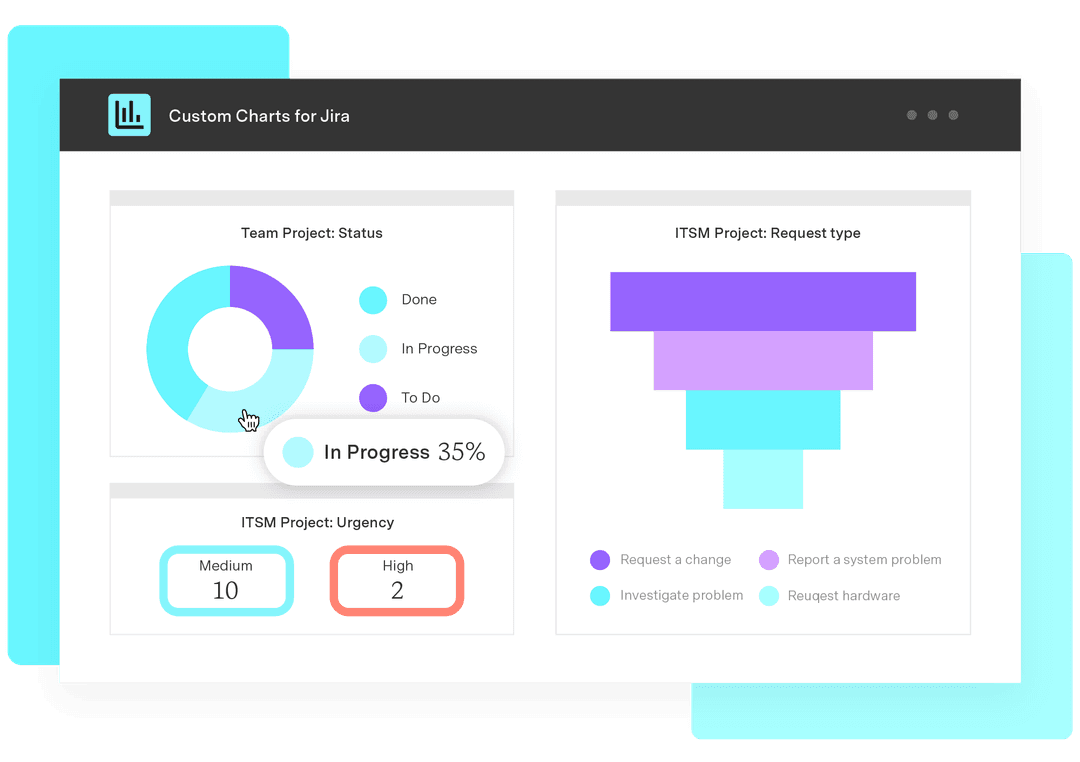SWOT analysis: Identify strengths, weaknesses, opportunities, and threats
Tempo Team
What’s driving success in your project, and what’s standing in the way? Identifying your strengths and challenges is central to a SWOT analysis, a powerful tool that helps teams build smarter strategies and uncover new opportunities.
Whether you’re launching a product, improving internal processes, or planning for long-term growth, a SWOT analysis offers a structured way to assess your current position and determine next steps.
We’ll discuss why a SWOT analysis matters, outline how to create one, and explore real-world examples to help you apply it effectively.
What is a SWOT analysis?
A SWOT analysis is a strategic planning framework developed in the 1960s by business consultant Albert Humphrey at the Stanford Research Institute. It helps organizations self-evaluate based on four factors: strengths, weaknesses, opportunities, and threats.
Strengths and weaknesses are internal. They focus on resources, capabilities, limitations, and operational gaps. Opportunities and threats are external, involving market trends and other outside forces.
The purpose of a SWOT analysis is simple: Consolidate the most relevant information to make smarter decisions. For example, a small tech startup might identify “rapid feature development” as a strength and “limited funding” as a weakness. Opportunities could include growing demand for automated tools in education, whereas a threat might be a well-funded competitor entering the market.
Organizing information this way allows teams to confront risks, leverage advantages, and build a strategy grounded in reality. In project management, this helps focus time and resources where they’ll have the most impact.
Why is a SWOT analysis important?
A SWOT analysis helps organizations understand their market position by organizing internal strengths and weaknesses alongside external opportunities and threats. The process uncovers hidden risks, such as overreliance on a single supplier or gaps in the customer experience. It also reveals overlooked opportunities, like untapped markets or shifting customer needs.
A SWOT analysis is a strong starting point for brainstorming, strategy development, and decision-making because it provides a clear snapshot of advantages and constraints. Teams use it to evaluate ideas and prioritize efforts based on their potential impact.
SWOT is also a practical tool to revisit during yearly planning, ensuring the organization’s goals and budgets align with its current circumstances and capabilities.
How to write a SWOT analysis
To create a SWOT analysis, gather information about your organization and its operational environment. Interview internal stakeholders, review performance metrics, study market trends, and assess competitor activity. Then, sort your findings into the four SWOT categories.
Here’s a definition of each category, along with guiding questions to help you write a SWOT analysis:
Strengths
Strengths are internal assets that give your organization a competitive advantage. For example, if your customer churn rate is lower than the industry average, that's a strength worth noting.
Questions to consider:
What do customers praise?
Where do we outperform competitors?
What unique expertise do we have?
Weaknesses
Weaknesses are internal limitations that hinder effectiveness, such as outdated systems, high employee turnover, skill gaps, poor brand awareness, or limited budget. Identifying weaknesses reveals potential obstacles.
Questions to consider:
Where do we lose time or money?
What are the most common complaints?
What capabilities are we missing?
Opportunities
Opportunities are external factors you could use to your advantage, like emerging markets or unmet customer needs.
Questions to consider:
Are there emerging trends we can capitalize on?
Have competitors ignored a market we could enter?
Are customer needs shifting in a way we can address?
Threats
Threats are external forces that could harm your position, such as new regulations, supply chain disruptions, or aggressive new competitors. Identifying threats helps you prepare.
Questions to consider:
What market changes could hurt us?
Are new competitors offering better pricing or technology?
Could public opinion or policy turn against us?
Real-world SWOT analysis examples for strategic planning
A SWOT analysis supports decision-making. Below are a few examples of how businesses have used it to take action:
Launching a new initiative: Patagonia’s Worn Wear program
Patagonia hasn’t shared its SWOT analysis, but the 2012 launch of its Worn Wear program reflects the insights a SWOT might reveal. Worn Wear offers customers credit for returning used Patagonia gear, which the company repairs and resells. This allows Patagonia to tap into the growing resale market, collect revenue from the same product multiple times, and reinforce its environmental values. Here’s a possible SWOT analysis supporting Patagonia’s decision:
Strengths: Loyal customer base and reputation for sustainability
Weaknesses: Operational complexity of managing repairs at scale
Opportunities: Growing demand for eco-friendly products and rising interest in secondhand clothing
Threats: Fluctuating supply of used gear and potential limits to customer adoption
Entering a new market: Spotify’s expansion into India
In 2019, Spotify expanded into India. The company invested in local content, launched a freemium model, and maintained competitive pricing. Here’s a possible SWOT analysis for that move:
Strengths: Strong global brand and user-friendly interface
Weaknesses: Limited regional music licensing and low local brand recognition
Opportunities: India’s massive mobile-first population, growing digital streaming adoption, and youthful demographic with rising disposable income
Threats: Established local players like Gaana and JioSaavn, pricing sensitivity, and complex licensing negotiations with Indian record labels
Pivoting to a new business model: Netflix’s move to streaming only
Although Netflix never published a SWOT analysis for its shift from DVD rentals to a streaming-only platform in 2023, the pivot reflects SWOT thinking. The change enabled Netflix to cut physical distribution costs and capitalize on the growing popularity of on-demand content. Here’s its potential analysis:
Strengths: An increasing subscriber base and an established user-friendly digital platform
Weaknesses: Rising logistical costs and declining interest in physical media
Opportunities: Expanding global internet access and growing consumer interest in on-demand content
Threats: Emerging digital competitors and declining interest in physical media formats
Drive strategic clarity with Tempo’s planning tools
Tempo’s suite of planning tools helps teams transform insights from a SWOT analysis into actionable strategies.
Custom Charts for Jira visualizes how initiatives align with business goals. Teams can monitor progress across multiple workstreams, spot blockers early, and quickly see which initiatives are on track – and which need attention.
Capacity Planner supports resource alignment by showing where team members are currently allocated and where priorities can shift. This tool is especially useful when a SWOT analysis reveals capacity gaps, allowing teams to realign resources more effectively.
Timesheets tracks where teams spend the most effort. The data informs future planning and uncovers any disconnects between strategic intent and actual time investment.
Together, these tools empower teams to act on SWOT insights, giving them a shared view of the work ahead and the means to drive project success. Book a demo today.













































